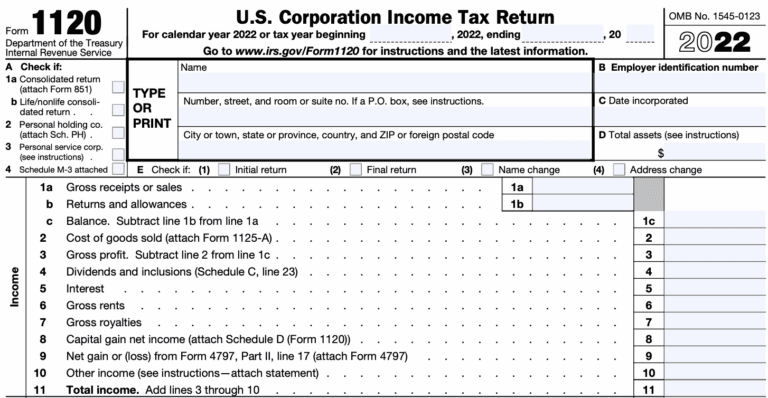Adjusted Gross Income VS Taxable Income- Best Guide In 2025
Table of Contents
When it comes to U.S. federal income tax filing, Adjusted Gross Income (AGI) and Taxable Income are two of the most critical financial figures you’ll encounter. Today, we are here to discuss the topic namely “Adjusted Gross Income VS Taxable Income” Both numbers impact your tax bill but serve very different functions in the tax calculation process. Understanding these differences is key to optimizing your tax strategy, maximizing deductions and credits, and reducing your overall tax liability.

What Is Adjusted Gross Income (AGI)?
Definition
Adjusted Gross Income is the total income you earn during a tax year, minus specific “above-the-line” deductions known as adjustments to income. AGI reflects your income after these adjustments but before standard or itemized deductions and tax credits are applied.
Why AGI Matters
- AGI is a benchmark figure that the IRS and tax preparers use to determine your eligibility for many tax benefits, including:
- Education credits (Lifetime Learning Credit, American Opportunity Credit)
- Retirement plan contribution limits (e.g., Roth IRA phaseouts)
- Child tax credits and earned income tax credit (EITC)
- Medical expense deductions (which must exceed a percentage of AGI)
- Alternative Minimum Tax (AMT) calculations
How to Calculate AGI
Start with your gross income, which includes:
- Wages, salaries, tips, and bonuses (W-2 income)
- Self-employment and business income
- Interest and dividends
- Capital gains (both short and long-term)
- Rental property income
- Royalties
- Unemployment compensation
- Alimony received (for divorces before 2019)
- Taxable Social Security benefits
Then subtract adjustments to income (“above-the-line” deductions), such as:
- Contributions to traditional IRAs
- Contributions to Health Savings Accounts (HSA)
- Student loan interest paid (up to $2,500)
- Educator expenses (up to $300)
- Self-employed health insurance premiums
- Half of self-employment tax paid
- Alimony paid (pre-2019 agreements)
- Moving expenses (only for active-duty military)
AGI Calculation Example
| Adjustments | Amount | ||
| Traditional IRA Contribution | $6,000 | ||
| Student Loan Interest | $1,500 | ||
| HSA Contribution | $3,000 | ||
| Total Adjustments | $10,500 | ||
AGI = Gross Income – Adjustments = $94,500 – $10,500 = $84,000
What Is Taxable Income?
Definition
Taxable Income is the amount of your income subject to federal income tax after subtracting the standard deduction or itemized deductions and any other applicable deductions from your AGI.
Taxable Income directly determines your federal tax liability based on IRS tax brackets.
Why Taxable Income Matters
- Taxable income is the base amount used to calculate the income tax you owe.
- It decides your tax bracket, affecting how much tax you pay on each dollar earned.
- It influences eligibility for other tax benefits, like capital gains rates or the Alternative Minimum Tax (AMT).
How to Calculate Taxable Income
Start with your AGI and subtract:
- The Standard Deduction (fixed dollar amount based on filing status), OR
- Itemized Deductions (medical expenses, mortgage interest, charitable donations, SALT taxes capped at $10,000, casualty losses, etc.)
Additionally, for eligible taxpayers, subtract:
- The Qualified Business Income (QBI) deduction (up to 20% of qualified business income)
Taxable Income Calculation Example (continuing the AGI example)
| Description | Amount |
| Adjusted Gross Income (AGI) | $84,000 |
| Standard Deduction (Single) | $14,600 |
| Taxable Income | $69,400 |
This $69,400 is the amount used to calculate your federal income tax according to IRS tax brackets.
Side-by-Side Comparison: Adjusted Gross Income vs Taxable Income
Understanding the nuanced differences between Adjusted Gross Income (AGI) and Taxable Income is essential for accurate tax filing and effective tax planning. Below is a detailed side-by-side comparison highlighting how these two critical tax figures differ in definition, purpose, timing, tax implications, and role in IRS Form 1040.
| Feature | Adjusted Gross Income (AGI) | Taxable Income |
| Definition | AGI is your gross income after subtracting allowable “above-the-line” deductions, such as IRA contributions, HSA contributions, and student loan interest. | Taxable income is the final amount of income that is actually subject to federal income tax, calculated by subtracting deductions from AGI. |
| Purpose | Used to determine eligibility for various tax credits, deductions, and income-based thresholds, such as Roth IRA contributions and education credits. | Used to determine how much income tax you owe based on applicable tax brackets and marginal tax rates. |
| When Calculated | AGI is computed early in the tax return process, right after calculating gross income and applying specific above-the-line adjustments. | Taxable income is calculated after determining AGI, and only after applying either the standard deduction or itemized deductions. |
| Impacts | Affects your eligibility for tax benefits and deductions like the Earned Income Tax Credit, Child Tax Credit, and medical expense deductions. | Affects your tax rate, tax bracket placement, and total tax liability—the higher the taxable income, the higher the potential tax owed. |
| Where on Form 1040 | AGI is shown on Line 11 of IRS Form 1040. | Taxable income is shown on Line 15 of IRS Form 1040. |
| Includes | Includes total income from all sources, such as wages, business income, and interest, minus allowable adjustments like HSA or retirement contributions. | Includes AGI minus deductions, whether you take the standard deduction or choose to itemize allowable expenses like mortgage interest or state taxes. |
| Can Be Lowered By | You can reduce your AGI by increasing “above-the-line” deductions, such as maxing out retirement account contributions or deducting self-employed health insurance. | You can reduce taxable income by claiming the higher of the standard deduction or itemizing, and taking the QBI deduction (if eligible). |
| Role in Tax Planning | AGI is the foundation for advanced tax planning and income management strategies. It influences most credit/deduction eligibility and phaseout limits. | Taxable income is the key figure for forecasting federal tax owed, determining whether you’ll be in a higher or lower tax bracket. |
| Effect on Phaseouts | AGI directly controls income-based phaseouts for several tax benefits. A high AGI can disqualify you from credits like the EITC or premium tax credit. | Taxable income does not impact phaseouts, but it determines how much tax you will pay. |
Key Takeaway
In summary, AGI is a gatekeeper, determining what tax benefits you may qualify for, while Taxable Income is the trigger, deciding how much income tax you actually owe. Taxpayers looking to optimize their tax outcome should focus on strategies to reduce both figures—adjusting income to lower AGI, and maximizing deductions to lower taxable income.
Why the Difference Matters to You
Impact of AGI on Your Taxes
- Your AGI controls the phaseout ranges for many tax benefits.
- A high AGI can reduce or eliminate deductions and credits.
- Many tax credits require your AGI to be under certain limits.
- Certain deductions (e.g., medical expenses) are calculated as a percentage of AGI.
Impact of Taxable Income on Your Taxes
- Your taxable income determines your marginal tax rate — the rate you pay on your last dollar of income.
- It directly determines your income tax liability.
- Lower taxable income generally means less tax owed.
Practical Example for Clarity
Scenario
- John is a single filer.
- Gross income: $100,000
- Adjustments: $8,000 (IRA + HSA contributions)
- Itemized deductions: $12,000 (mortgage interest + charitable donations)
| Calculation Step | Amount |
| Gross Income | $100,000 |
| Less Adjustments (above-the-line deductions) | – $8,000 |
| AGI | $92,000 |
| Less Itemized Deductions | – $12,000 |
| Taxable Income | $80,000 |
John’s taxable income of $80,000 is the figure on which his federal income tax will be calculated.
Summary Table
| Characteristic | Adjusted Gross Income (AGI) | Taxable Income |
| Calculation Base | Total income minus above-the-line deductions | AGI minus deductions (standard/itemized) |
| Role in Tax Filing | Determines eligibility for credits/deductions | Determines tax bracket and tax owed |
| Where It Appears on Form | Line 11, Form 1040 | Line 15, Form 1040 |
| Can Be Lowered By | Increasing eligible above-the-line deductions | Taking standard or itemized deductions |
| Affects Eligibility For | Credits like EITC, Child Tax Credit, Roth IRA limits | Final tax liability and tax rates |
Tax Planning Tips to Manage Both AGI and Taxable Income
- Maximize Above-the-Line Deductions to reduce AGI:
Contribute to IRAs, HSAs, pay student loan interest, or invest in retirement plans. - Choose the Best Deduction Method:
Use itemized deductions if they exceed the standard deduction; otherwise, take the standard deduction. - Use Tax-Deferred Retirement Plans to lower AGI now and defer income.
- Harvest Capital Losses to offset gains and reduce taxable income.
- Review Timing of Income and Expenses to shift income or deductions into years with lower AGI or taxable income.
Conclusion
Adjusted Gross Income (AGI) and Taxable Income are both crucial numbers on your tax return but serve distinct purposes:
- AGI shapes your eligibility for deductions, credits, and other benefits by representing your income after certain adjustments.
- Taxable Income is the final income figure on which your federal tax is based after subtracting deductions.
Understanding their differences, how to calculate each, and their effects on your tax situation is foundational to smart tax planning and maximizing your financial well-being.
Frequently Asked Questions (FAQs): Adjusted Gross Income (AGI) vs. Taxable Income
1. What is the difference between Adjusted Gross Income (AGI) and Taxable Income?
AGI is your total income minus specific deductions known as “adjustments to income,” such as IRA contributions, HSA contributions, or student loan interest. Taxable Income is what remains after subtracting either the standard deduction or itemized deductions from your AGI. In short, AGI determines eligibility for tax benefits, while Taxable Income determines how much federal income tax you owe.
2. Why is Adjusted Gross Income important?
AGI is crucial because it serves as the baseline for determining your eligibility for many tax credits and deductions. These include the Child Tax Credit, Earned Income Tax Credit, Premium Tax Credit, and education-related credits. Many income-based phaseouts are calculated using AGI, so lowering it can increase your access to these benefits.
3. How can I lower my AGI?
You can reduce your AGI by claiming above-the-line deductions, which don’t require itemizing. Common ways include:
- Contributing to a traditional IRA or HSA
- Deducting student loan interest
- Self-employed health insurance deductions
- Making alimony payments (for divorces finalized before 2019)
These deductions directly reduce your AGI, potentially increasing your eligibility for tax credits and deductions.
4. What deductions affect Taxable Income but not AGI?
Deductions that affect Taxable Income but not AGI include the:
- Standard deduction (a flat amount based on your filing status)
- Itemized deductions such as mortgage interest, state and local taxes (SALT), charitable contributions, and medical expenses above the AGI threshold
- Qualified Business Income (QBI) deduction, if eligible
These deductions come after AGI is calculated, and reduce your income that is actually subject to tax.
5. Which one determines my tax bracket—AGI or Taxable Income?
Your tax bracket is determined by your Taxable Income, not your AGI. The IRS applies progressive tax rates (ranging from 10% to 37%) to your Taxable Income. Therefore, once all deductions and exemptions are accounted for, your Taxable Income defines your final tax liability.
6. Where can I find AGI and Taxable Income on IRS Form 1040?
- Adjusted Gross Income (AGI) is reported on Line 11 of Form 1040.
- Taxable Income is shown on Line 15.
These lines are essential for determining tax liability and eligibility for benefits.
7. Can my AGI be higher than my Taxable Income?
Yes. AGI is almost always higher than Taxable Income because you subtract either the standard deduction or itemized deductions from AGI to arrive at Taxable Income. For example, if your AGI is $75,000 and you take a standard deduction of $13,850 (single filer in 2024), your Taxable Income would be $61,150.
8. Does AGI affect state income tax too?
Yes, in many states, your state income tax starts with your federal AGI, and state-specific deductions or credits are applied from there. Some states use AGI as a base, while others apply their own adjustments to determine taxable income at the state level.
9. Is AGI used to calculate eligibility for health insurance subsidies?
Absolutely. The Marketplace uses Modified Adjusted Gross Income (MAGI) to determine eligibility for subsidies under the Affordable Care Act. MAGI is essentially AGI plus some non-taxable income, like Social Security benefits or foreign earned income.
10. How do AGI and Taxable Income affect tax planning?
AGI is key in strategic tax planning because reducing it may unlock eligibility for more credits and lower tax rates. Taxable Income is the final checkpoint that determines how much tax you pay. Effective tax planning involves managing both figures—through income timing, deductions, and retirement contributions—to reduce your total tax burden.







